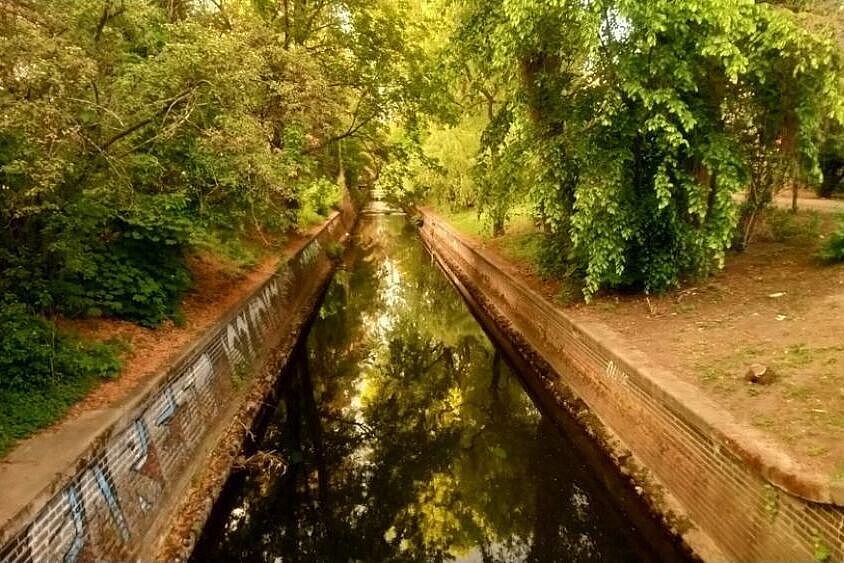A team led by the Technical University of Berlin (TU Berlin) and IGB has studied how the water budget and quality have developed over the last 60 years: Restauration measures between 1985 and 1995 have significantly improved the chemical water quality. But climate change can reverse this positive development: Heavy rainfall and dry periods change the chemodynamics of the river.
The Panke is a small river that rises in the Barnim near Bernau and flows into the Spree in Berlin. Of its 29 kilometres of flow, 20 kilometres are on Berlin city territory. "Stinky Panke" it was called in the 19th century, when industry and growing settlements turned the river into a cesspool. But from the 1980s onwards, the Panke steadily improved; "Panke 2015" was the first joint project of the states of Berlin and Brandenburg to implement the EU Water Framework Directive. "Since then, a lot has been invested in renaturation measures, but the Panke is and remains a highly urbanised river that is exposed to diverse human influences and environmental changes," said Dr Christian Marx, researcher at TU Berlin who conducted the study as part of his doctorate.
The research team evaluated over 30 years of data series on hydroclimate and over 60 years of data series on water quantity and quality of the Panke to find out how the effects of management measures and changing environmental conditions affected the Panke.
Improving water quality through renaturation measures and more efficient wastewater treatment
"Although the lower reaches of the catchment are still fed by the treated wastewater of about 700,000 people and about 30 per cent of the catchment is used for agriculture, the water quality in terms of nitrogen nutrients and phosphate is generally good to sufficient for an urban water body and has improved significantly over time at most sites," said Professor. Dörthe Tetzlaff, Head of Department at IGB and co-author. The data show that this is a result of changes in management, restoration and more effective wastewater treatment. The general decrease in fertiliser use has also led to lower nitrate and ammonium pollution. These positive developments were particularly evident after management measures between 1985 and 2000, where investments led to an improvement in water quality from quality Class IV to Class II or better. With Class II status, the German target for meeting the chemical requirement of the European Water Framework Directive has also been achieved in the upper reaches.
Ammonium and phosphate increase in dry periods, nitrate decreases
The long-term data also show that water chemistry has deteriorated again due to hydroclimatic dynamics such as long dry periods, as in 2018, and heavy rainfall events, as in 2017. "In general, the influence of hydroclimate on water quality increases with the degree of urbanisation, from upstream to downstream. Hydroclimate also influences the function of water treatment in wastewater treatment plants. So, for a river like the Panke, which is largely fed by treated wastewater in dry periods, this can play a significant role," explained Christian Marx.
When precipitation is lacking in dry periods, pollutants enter wastewater treatment plants less diluted. Wastewater treatment plants with activated sludge treatment may benefit from lower volumes with longer retention times and higher biological activity during drought periods, but at the same time ammonium concentrations increase, suggesting inhibition of nitrification or a concentration effect. However, the increased ammonium concentrations are – at least so far – harmless due to the general improved water quality and resilience.
Concentrations for phosphate were highest during extremes: drought and long wet periods. This is due to altered hydrological connectivity and substance-specific flow pathways. Nitrate concentrations were lower during dry periods and higher during wet periods as a result of differences in the mobility and connectivity of agricultural soils to the stream network upstream in the catchment.
However, impacts on water quality classes below Class II were not exceeded. "These findings from the Panke catchment underline the importance of strategic adaptation and improvement of water treatment and water resource management to improve the quality of urban watercourses. They also show how important long-term, integrated data sets are. That is why we are also continuing our detailed process-based research and investigations on the Panke", concluded Dörthe Tetzlaff.


